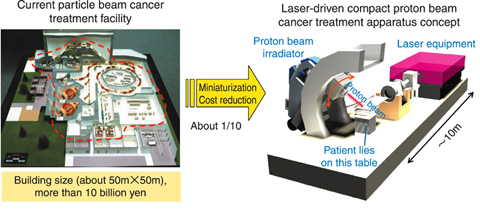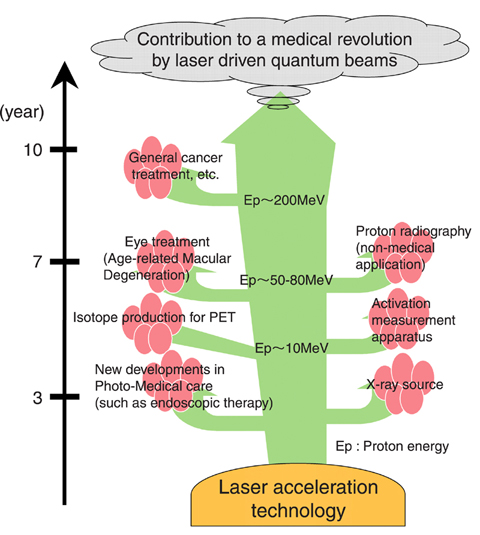
Fig.11-1 Current ion beam medical facility and outline of a compact cancer treatment apparatus

Fig.11-2 The path of medical innovation and specific technologies developed
The Photo Medical Research Center (PMRC) of JAEA is promoting the innovative development of a more compact cancer treatment apparatus based on laser-driven ion beams (Fig.11-1). This is in contrast to the present conventional accelerator-based facilities that are typically larger and more costly. Our goal is for this innovation to facilitate wider access to ion beam cancer treatment (Fig.11-2). We conducted the following activities in fiscal 2008.
This PMRC project is being pursued in collaboration with ten partners (clinical research: Hyogo Ion Beam Medical Center (HIBMC), laser development: Hamamatsu Photonics K.K. and Ushio Inc., irradiation technology development: Toshiba Corporation, monitor device development: the Shimadzu Corporation, activation device development: Toyota Central R&D Labs., Inc., minimally invasive medical device development: HOYA Corporation and Fujikura Ltd., human resource development: Nippon Advanced Technology Co., Ltd. and HOC). We are associated with the JAEA Research Common Initiative and receive cooperation from organizations such as the Keihanna New Industry Creation and Interactive Community Center and twenty-one medical device/facility companies (members of the ITBS Research Society) and thirteen laser technology companies (members of the Society for Study of Laser Microfabrication).
To advance development of a laser driven compact irradiation device, we carried out research and development to increase the number of protons accelerated by a laser and improve beam quality. To increase proton energy we made tests with various target materials and laser-irradiation parameters. In separate gas cluster target studies we also verified acceleration of heavier ions to a maximum energy of 18MeV per nucleon. We also began a study of proton irradiation effects on human cancer cells.
Using a conventional accelerator source of protons at HIBMC we have fabricated an irradiation chamber for phantom target tests and animal experiments.
As part of our industrial applications efforts, we examined application of proton-induced radio-activation to studying wear on metal surfaces. We also fabricated a minimally-invasive fiber-based medical device was and used it in animal experiments. Furthermore, we developed a technique for focusing light to a small radius and a technique for measuring blood flow. We have also considered collaborative research with the Fukui Prefectural Hospital, and have started research in preparation for clinical tests.
We have begun development of a prototype compact ytterbium-doped YAG laser system. We aim to achieve high-power and high-repetition rated operation that is stable and reliable.